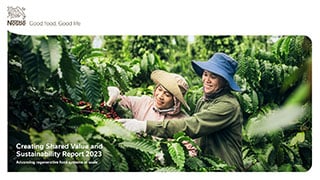Contribute to a more sustainable experience by switching to dark mode. Find out more.
Secondary menu
-
Careers
Header persistent submenu
-
Investors
 Back
Back

Learn about our strategy, sales and results or download our investor seminar presentations.
Header persistent submenu
-
Media
Header persistent submenu
Header persistent submenu
We disclose the list of suppliers alongside a variety of data of our priority raw materials that are part of our Responsible Sourcing program. This is to enhance transparency in the agri-food sector and covers 95% of our company's annual sourcing of raw materials.
Nestlé supply chain disclosure documents:
- Cereals & Grains (pdf, 400Kb)
- Cocoa (pdf, 300Kb)
- Coconut (pdf, 100Kb)
- Coffee (pdf, 600Kb)
- Dairy Ingredients (pdf, 1Mb)
- Hazelnuts (pdf, 100Kb)
- Milk (fresh) (pdf, 400Kb)
- Palm Oil (pdf, 1.5Mb)
- Pulp & Paper Tier 1 (pdf, 500Kb) and Pulp & Paper Mills (pdf, 500Kb)
- Seafood Supply Origin (pdf, 100Kb)
- Soya (pdf, 100Kb)
- Spices Tier 1 & Processing Sites (pdf, 600Kb)
- Sugar (pdf, 400Kb)
- Vegetables Tier 1 & Processing Sites (pdf, 500Kb)
Creating Shared Value and Sustainability Report


